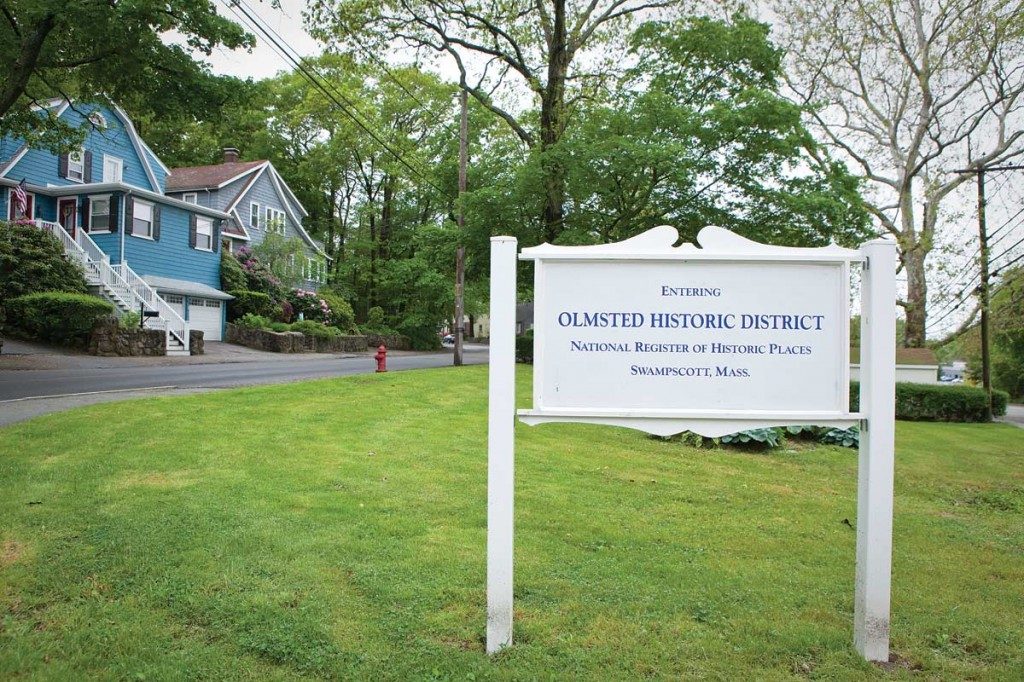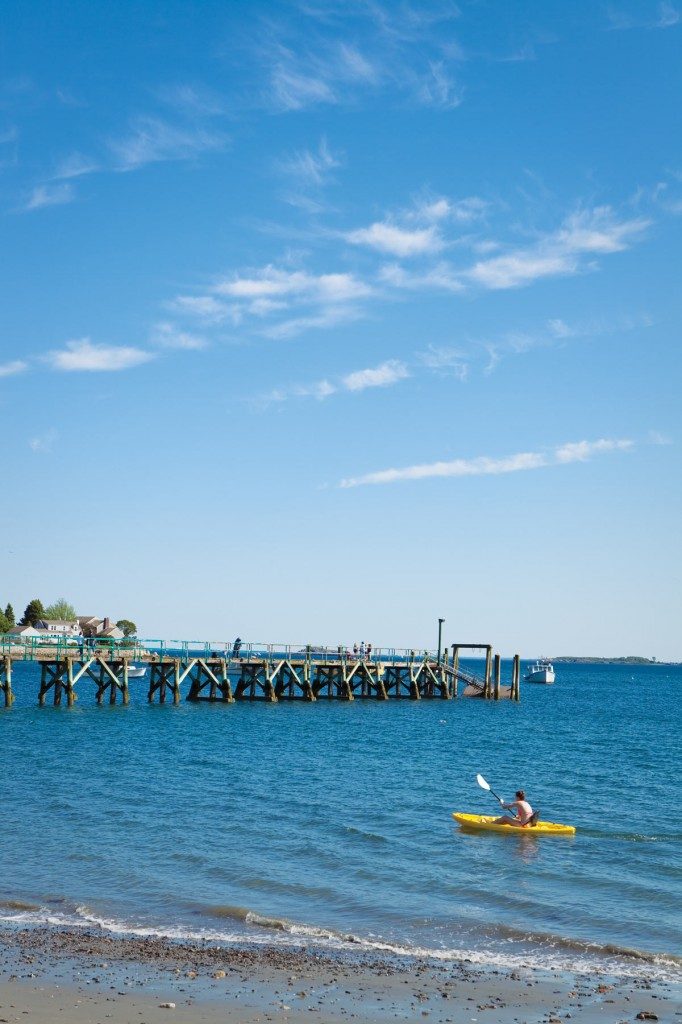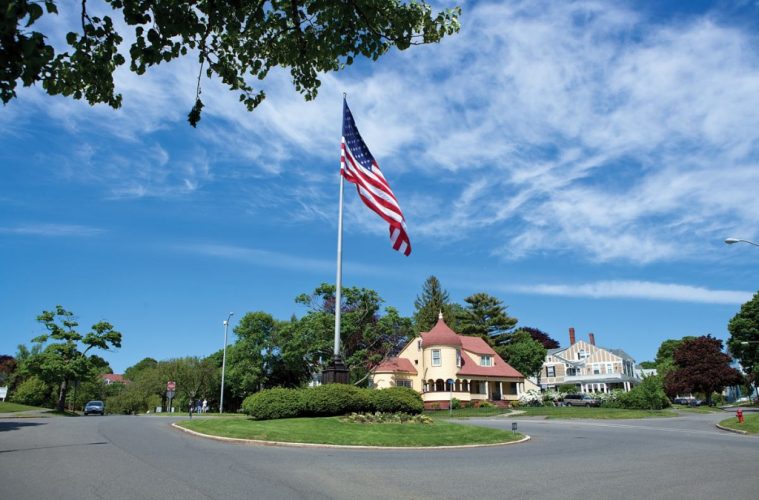Swampscott is swimming in historical narratives, lifestyle lure, and oceanfront artisanship.
Just as adventurous road trips are full of the unexpected, so, too, is the historic seaside town of Swampscott—”land of the red rock.” Sprawling along the coast of Nahant and Massachusetts Bays, the busy little Boston ‘burb bubbles with entrepreneurial spirit, burgeoning culinary panache, and nautical enchantment.
First settled in 1629, when Francis Ingalls established the Massachusetts Bay Colony tannery on Humphrey’s Brook, Swampscott is now home to a diverse population of roughly 14,000 people. Originally part of Lynn, it was incorporated in 1852. Cod, haddock, pollock, hake, and mackerel provided the town’s mainstay, supplemented with shoe manufacturing and a few minor production industries. By the mid-20th century, Swampscott was a resort destination. Populated with large estates and comely inns, wealthy families from all over the world whiled away entire summers in the quaint maritime town.
Now reliant on its recreational appeal, it has become a favored spot for frolicking on the beach, enjoying ice cream and clam rolls, catching a live show, and savoring gourmet meals—especially those featuring fish. “The town really comes to life during the late spring, summer, and fall, when residents and visitors take full advantage of the beaches,” says Peter Kane, Swampscott’s town planner and energy-efficiency manager. Several beaches lend the area a nearly year-round vacation vibe, including Phillips, Preston, Fisherman’s, and Eisman’s beaches, as well as King’s Beach, along which runs Humphrey Street, the town’s hub. There, many businesses enjoy an enviable waterfront view.

Olmsted Subdivision Historic District
“The community has a number of events to partner with beach activity,” says Kane, “[including] the Harbor Festival in June, the Strawberry Festival, Fourth of July festivities, and the Classic Car Show in October. As of last year, the town also started a Farmers’ Market, which runs from March through October.” Additionally, concerts and movie nights in Linscott Park evoke a true hometown flavor.
Complementing the town’s amenities is its appreciable history. Figures like John Humphrey, the first deputy governor of the Massachusetts Bay Colony, and Andrew Preston, founder of the United Fruit Company, are responsible for Swampscott’s many contributions to the National Register of Historic Places. By honoring its roots and preserving the sites and buildings of its past, the town continues to be an important locale and, as Kane points out, “Although the days of the grand hotels in Swampscott have passed, residents and visitors can still enjoy some of the remaining aspects by swimming at Eiseman’s Beach and playing in Johnson Park, where the New Ocean House used to have its swimming pool.”
Among the area’s many registered historic sites is the Marian Court—White Court mansion on Littles Point. Designed by Boston-based Little & Browne, the home was built in 1895 in the Classical Revival style and served as President Calvin Coolidge’s summer house in 1925. Today, it stands as Marian Court College—a four-year, co-educational Catholic school.
Other noteworthy landmarks include Monument Square—a park-like gateway to town and entrance to the Olmsted Subdivision Historic District. Invitingly green, visitors enjoy the expansive lawns of the Georgian Revival House once owned by Elihu Thomson, founder of General Electric, and Linscott Park. Over on Railroad Avenue, the Stick-style Swampscott Depot, built in 1863, receives daily commuters, though the interior remains in a state of disuse. As for natural riches, the nearly 18-acre Palmer Pond Wildlife Conservation area, hemmed with beach plums and rosa rugosa, is a dune-covered romping ground for flora and fauna, beyond which lies the Swampscott headland known as Littles Point—an area marked for its rock formations and tide pools.

Swampscott offers easy access to the beach for kayaking and surfing.
Of particular interest is the Shingle-style Swampscott Fish House, the oldest active fish house in the country. Now home to the Swampscott Yacht Club, sailing, regattas, and competitions keep the house and dock alive with activity. Built in 1896, its original function was to consolidate the many fishing structures that had previously disturbed the Nahant Bay view. Also noteworthy is the invention of the Swampscott dory; born of the traditional fishing vessel used by villagers all along the Massachusetts coastline since Colonial times, the eponymous dory was invented in 1840 by Theophilius Brackett and used to row and to pull lobster pots.
Once an oceanside hideaway for the wealthy, modern-day Swampscott beats with the North Shore’s collective pulse. Here, beauty is ubiquitous, stately residences polish the streets, and ghosts from an industrious past are part of the town’s character. Leslie Gould, president/CEO of the Lynn Area Chamber of Commerce, says, “The beauty of Swampscott is in the simplicity of things. I think its untouched beaches are [its] key asset…beautiful, clean family beaches.”
Birthplace of the lobster pot, Swampscott is where people are busily engaged and pleasantly relaxed in their seaside post.
Planning a visit to Swampcott? Make a note to stop in at these must-see spots.
The Details
Date of Settlement: 1629. Date of Incorporation: 1852. Area: 6.7 square miles, of which 3.7 square miles is water. Population: 14,413. Zip Code: 01907. Median Household Income: $86,484. Schools: Stanley Elementary, Hadley Elementary, Clarke Elementary, Swampscott Middle School, Swampscott High School, Marian Court College. Notable Residents: Bill Adams, retired Buffalo Bills player; Harold Alfond, Dexter Shoe founder; Walter Brennan, Academy award-winning actor; Dick Jauron, former Chicago Bears, Buffalo Bills, and Detroit Lions head coach; Mike Lynch, Channel 5 principal sports anchor; Michael Palmer, author of The First Patient; Barry Pederson, former NHL and Boston Bruin all-star and NESN hockey analyst.
An Olmsted Community – The “Father of Landscape Architecture” molded Swampscott into the quaint seaside town it is today.
With numerous historic landscapes characterizing its streets, Swampscott holds a torch for its designer, Frederick Law Olmsted, “the father of landscape architecture.” Perhaps most famous for designing New York’s Central Park, Olmsted viewed parks as playing a significant role in society’s reformation.
In 1883, Olmsted moved to Brookline, where he established the world’s first full-scale professional landscape architecture firm, out of which he and his successors designed thousands of public and private landscapes across the country—now safeguarded by the National Park Service. Swampscott’s Olmsted Subdivision Historic District is numbered among those ranks and listed on the National Register of Historic Places.
Roughly bounded by New Ocean Street/Paradise Road, Swampscott Avenue, Redington Street, and Burrill Street, the 130-acre former estate of E. Redington Mudge features Queen Anne Shingle-style homes, the curvilinear roads of which Olmsted was so fond, planted traffic islands, and a grand entry parkway. Balancing a sense of community with the need for privacy, he connected individual lots with meandering roads that hugged hills and valleys like rural pathways. At the district’s entrance stood a public boulevard marked with a civic monument, flowering trees, and sculpted shrubbery.
Commissioned in 1888 at the request of the Swampscott Land Trust, the neighborhood’s topographic features and well-preserved architecture demonstrate the landscape architect’s indelible genius. “The old neighborhoods lend a lot of character,” says Peter Kane, Swampscott’s town planner and energy-efficiency manager. “Walking through the Olmsted subdivision…you really get a sense of living in a quiet coastal town.” Having once said “the comprehensive improvement of Boston suburbs” was his most important work, Olmsted’s vision for Swampscott was to create an exclusive neighborhood free of manufacturing, livery, or liquor-related commercial endeavors. Swampscott was Olmsted’s final project before retiring.
Sitting modestly on a Humphrey Street curbside is a sign declaring Swampscott “an Olmsted Community.” More indicative of that claim are the winding roads, island lawns, and handsome interplay of architecture and landscape found throughout the celebrated subdivision. essexheritage.org

